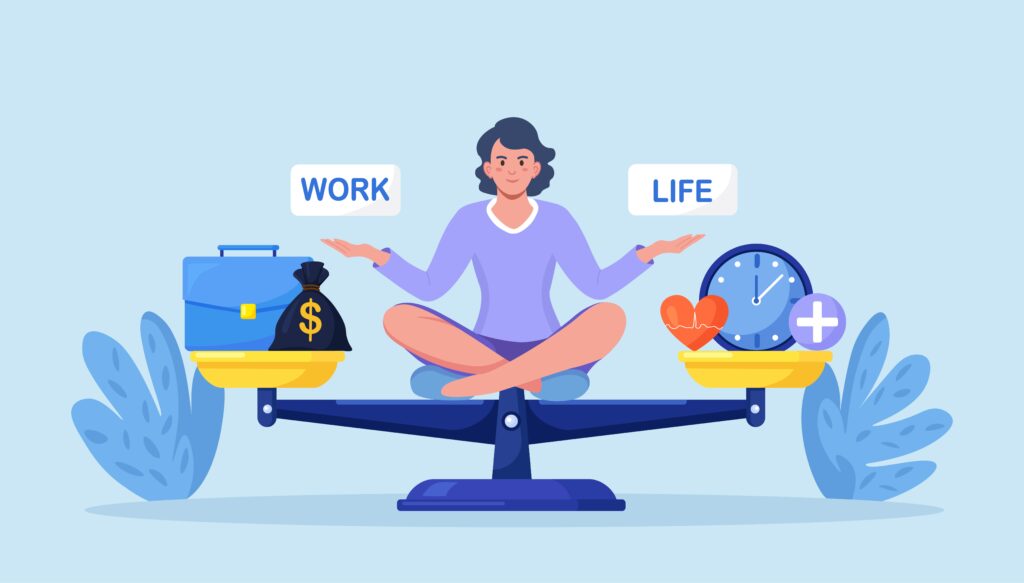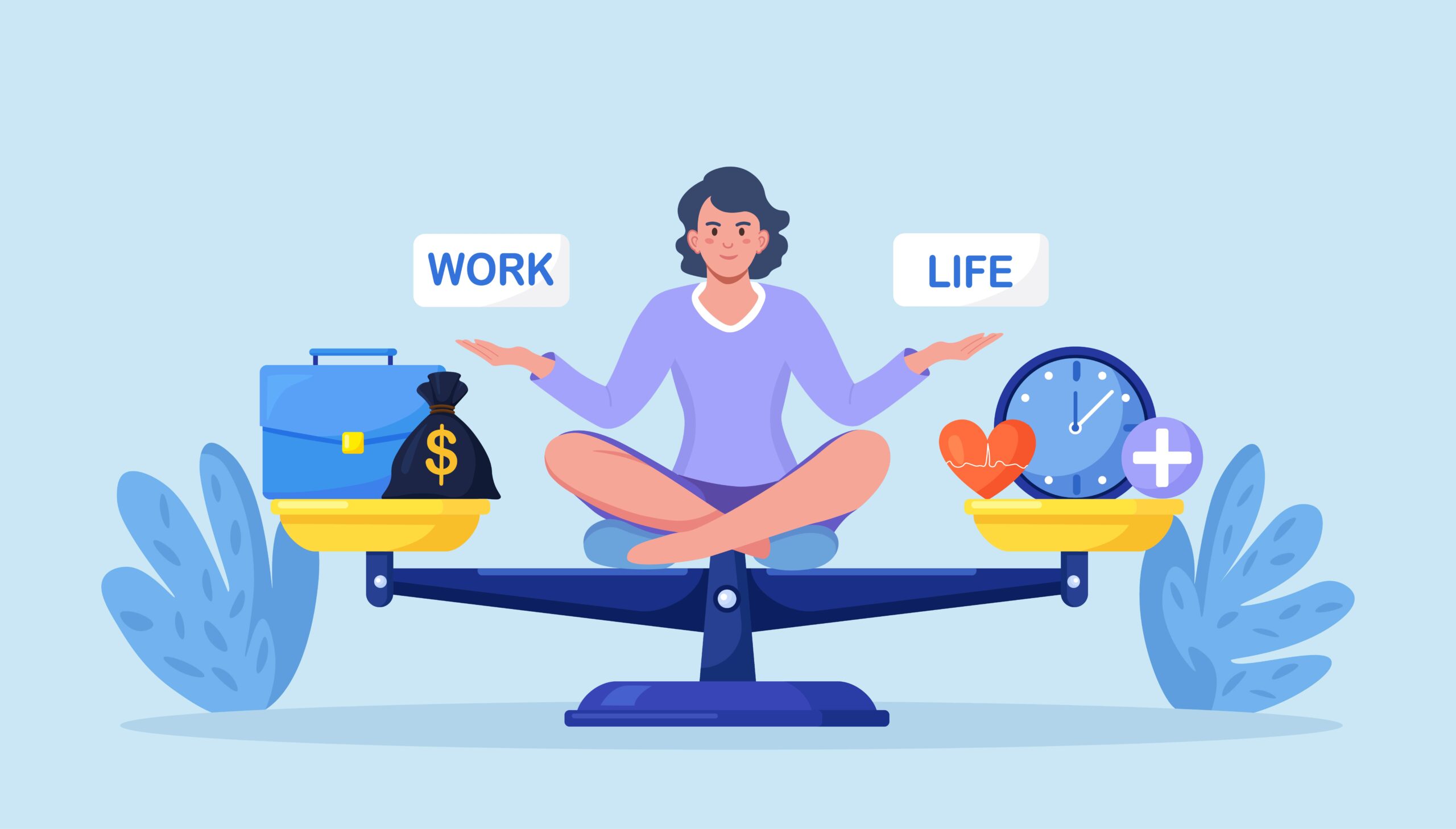
Nowadays, mental health has become the topmost priority for all employees in the workspace. As a professional, in today’s fast-paced world it’s becoming increasingly difficult to achieve a work-life balance. Achieving a healthy work-life balance is critical for your long term success and well-being. Maintaining a healthy work-life balance is not just a matter of personal wellbeing, but also a critical component of creativity and productivity.
At its core, work-life balance refers to effectively managing your time and energy between work responsibilities and personal life. This includes everything from spending quality time with family and friends, pursuing hobbies and interests, maintaining a healthy lifestyle, and excelling in your professional career.
To achieve work-life balance is essential for overall well-being. It helps reduce stress and burnout while enhancing your personal and professional growth. When individuals can balance their personal and professional lives, they tend to be more productive, efficient, and creative in their work, ultimately leading to better outcomes.
In contrast, when work-life balance is out of sync, individuals may experience a range of negative consequences, such as poor physical and mental health, decreased job satisfaction, and strained relationships with loved ones. Individuals need to prioritize their personal well-being and maintain a healthy work-life balance to achieve long-term success and happiness.
Importance of Work-Life Balance:
Achieving a healthy work-life balance is crucial for maintaining overall well-being and happiness. It is also a critical contributor for improving employee productivity and the performance of an organization. Without a healthy work-life balance, an organization will end up with a burned-out workforce with low motivation, lack of focus and poor performance.
Organizations that can achieve a positive work-life balance for their employees also build a better employer reputation in the process, which helps attract and retain good talent. At the same time, the workforce with a positive work-life balance has fewer health problems, is highly engaged and more mindful of their work commitments.
Ways to achieve a Balanced Life:
- Prioritizing your life and settings goals: To achieve work-life balance, prioritize your life and set goals that align with your values. Set SMART goals (specific, measurable, achievable, relevant, and time-bound) that will help you stay focused and motivated. Identify your priorities and set realistic goals for each day or week. Use tools like calendars or planners to keep track of deadlines and appointments.
- Setting Realistic Expectations for Yourself and Others: Setting Realistic Setting unrealistic expectations for yourself or others can lead to burnout and stress. Be honest about what you can accomplish in a day or week, both at work and in your personal life. Communicate these expectations clearly with others so they understand what they can expect from you.
- Delegating Tasks and Asking for Help When Needed: Don’t be afraid to delegate tasks or ask for help when needed to save you time and allow others to contribute their skills and expertise. This is one of the best work-life balance benefits, so don’t miss it.
- Learn to say no: It’s okay to say no when you feel like you have too much on your plate. It’s important to recognize when you are feeling overwhelmed and to communicate your needs effectively. This can include saying “no” to additional tasks or responsibilities prioritizing your workload and delegating tasks to others can also help you manage your workload effectively and avoid burnout. Learning to set boundaries and manage your workload in a healthy way is essential for achieving balance in your life, both at work and at home.
- Learn to manage stress: Stress is an inevitable part of life, especially in a corporate environment. Mindfulness can help you stay focused and present in the moment. This can include meditation, deep breathing, exercise etc
- Creating a Supportive Work Environment: Creating a supportive work environment is crucial for achieving work-life balance. This means openly communicating with supervisors about workload and expectations. By integrating work and personal life, we can achieve a healthy balance that allows you to professionally and personally thrive.
Conclusion:
Achieving work-life balance may seem like an elusive goal, but it is definitely worth striving for. You can improve your work-life balance and enjoy a happier, healthier life by taking small steps and implementing our discussed tips.
Start with small changes and build from there. Prioritize your time, set boundaries, and practice self-care. Small steps can lead to big results. Don’t forget to celebrate your achievements along the way! Acknowledge your progress towards achieving work-life balance and reward yourself for your hard work. This will help keep you motivated to continue striving for balance.
Prioritizing work-life balance has numerous benefits for both your physical and mental health. It can reduce stress, improve relationships, increase productivity, and lead to greater overall happiness. Remember that to achieve work-life balance is an ongoing process that requires effort and dedication. Don’t give up if you experience setbacks or challenges along the way. Keep striving towards a balanced life – it’s worth it!
In conclusion, prioritizing work-life balance is essential for our well-being in today’s fast-paced world. By implementing these tips and taking small steps towards achieving balance, we can enjoy happier, healthier lives with more time for the things that matter most to us.

